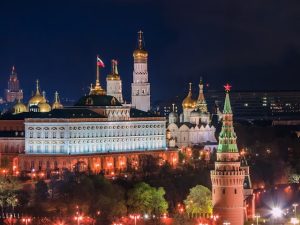When Does Technology Hinder Disaster Communications?
![]() Global warming is really taking a toll on Mother Earth. If you haven’t noticed, almost every part of the world is being hit by natural disasters almost every week. Earthquakes, hurricanes, flash floods, mudslides, threat of volcano eruption… not to mention the man-made disasters brought about by riots, terrorist attacks and people who went berserk.
Global warming is really taking a toll on Mother Earth. If you haven’t noticed, almost every part of the world is being hit by natural disasters almost every week. Earthquakes, hurricanes, flash floods, mudslides, threat of volcano eruption… not to mention the man-made disasters brought about by riots, terrorist attacks and people who went berserk.
With all the happenings around us, emergency agencies have seen the power and usefulness of technology in critical times. People were rescued because they had the wits to update their Facebook status or send a tweet or even send a simple text message. Most people choose to call rather than text but this congests the lines, making it impossible to reach anyone.
According to Chomp, search for disaster related apps dramatically grew in the past month in lieu of recent disasters. Hurricane app searches spiked more than 2000% during Irene’s formation, and search saw a 250% increase for Emily’s advance. Earthquake app search traffic was up 2000% immediately after the magnitude 5.8 shake up in Virginia.
While it’s important for individuals to keep in contact with each other during times of disaster, emergency and government organizations are in need of strong communications tools as well. Last August FCC Chairman Julius Genachowski announced the Next Generation 9-1-1 (NG911) service to make texts and multimedia (photos and videos) available for the public to send with 911-emergencies so that first responders can better prepare for situations.
Government agencies such as the U.S. Department of Health and Human Services’ Office of the Assistant Secretary for Preparedness and Response (ASPR) and the Federal Emergency Management Agency (FEMA) launched a contest for developers seeking an app that would help people in emergency or during disasters. It’s a tactic that many agencies and public service units are using to rally support and tools around available technology.
![]() The Federal Emergency Management Agency (FEMA) was quick to launch an Android disaster preparedness app last August, with plans to launch an iOS version soon. The app contains information for different types of disasters, an interactive checklist for emergency kits, a section to plan emergency meeting locations, information on how to stay safe and recover after a disaster. There’s also a map with FEMA Disaster Recovery Center locations and shelters general ways the public can get involved before and after a disaster, and the FEMA blog.
The Federal Emergency Management Agency (FEMA) was quick to launch an Android disaster preparedness app last August, with plans to launch an iOS version soon. The app contains information for different types of disasters, an interactive checklist for emergency kits, a section to plan emergency meeting locations, information on how to stay safe and recover after a disaster. There’s also a map with FEMA Disaster Recovery Center locations and shelters general ways the public can get involved before and after a disaster, and the FEMA blog.
Another service FEMA introduced is FEMA Text Message, where users can receive text messages from FEMA just by typing some keywords.
Technology can be really useful in times like these but there will always be someone who will use this to create havoc like those involved in the London riot where Twitter was used to both create chaos and aid the police. We should never forget that no matter how powerful technology is, it’s also easily abused, and something as a simple practical joke could have lasting and far-reaching affects. Abuse the system, and you could end up in jail for sending chaos-provoking tweets.
So where does technology actually get in the way of efficient communication? “Mostly that happens when we start to imagine that technology will solve problems by itself; then very quickly we see how technology without understanding just ‘raises the noise floor,'” says
Art Botterell, disaster consultant for Carnegie Mellon’s DMI. “The procedural, human and organizational aspects of the problem are every bit as critical as the technical layer.”
“That’s why we have the ‘action research’ program we call the Disaster Management Initiative. Hardware and software engineers know what the new possibilities are, but until we put those new tools in the hands of actual responders and emergency managers and exercise them in a realistic working environment, there’s no telling what real-world challenges… or opportunities… lie beyond the original technical notion.”
There’s a serious convergence of consumer access and implemented technology taking place right now, and it’s an enabling force with a great deal of potential for times of disaster. But there’s still a ways to go. Determining the most efficient route will require work such as that being done at Carnegie Mellon, leveraging big data and research to uncover patterns that will help us make the right decisions in the future. When it comes to disaster preparedness, technology, too, needs to learn from the past and construct better mechanisms for tomorrow.
Contributors: Mellisa Tolentino
A message from John Furrier, co-founder of SiliconANGLE:
Your vote of support is important to us and it helps us keep the content FREE.
One click below supports our mission to provide free, deep, and relevant content.
Join our community on YouTube
Join the community that includes more than 15,000 #CubeAlumni experts, including Amazon.com CEO Andy Jassy, Dell Technologies founder and CEO Michael Dell, Intel CEO Pat Gelsinger, and many more luminaries and experts.
THANK YOU

















